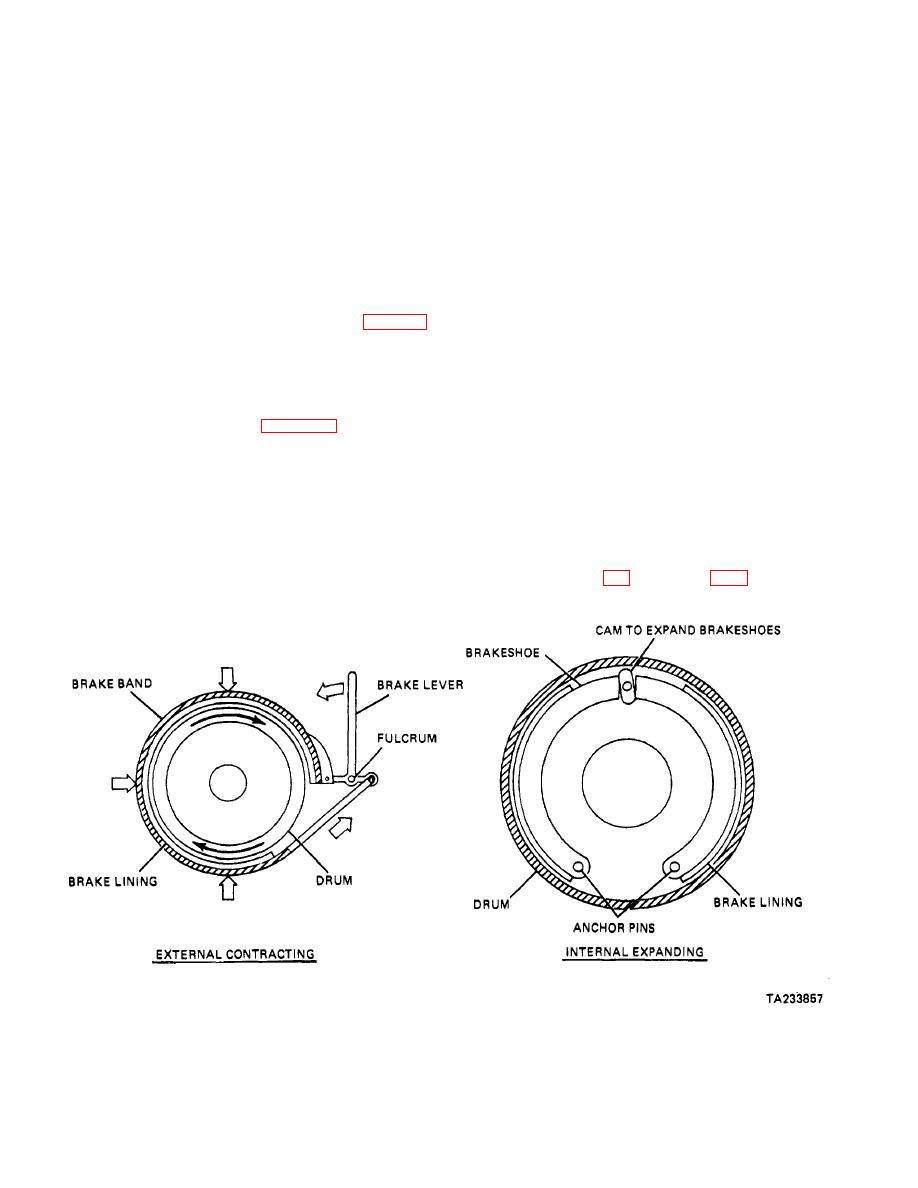
| Tweet |

Custom Search
|
|

|
||
 TM 9-8000
Section II. DRUM BRAKE MECHANISMS
commonly is used because it is cheaper to produce In
34-6. Rotating and Nonrotating Units. There are
large quantities. Steel shoes expand at about the same
many types of brake system designs In use on modern
rate as the drum when heat Is generated by brake
automotive vehicles. Regardless of the design, all
application, thereby maintaining the clearance between
systems require the use of a rotating and nonrotating
the brakedrum and brakeshoe under most conditions.
unit. Each of these units houses one of the braking
The brake lining Is riveted or bonded to the face of the
surfaces, which, when forced together, produce the
brakeshoe and makes contact with the Inner surface of
friction required for braking action. The rotating unit on
the brakedrum. Semitubular brass rivets sometimes are
many motor vehicle wheel brakes consists of a drum that
used to attach the brake lining to the brakeshoe. The
is secured to and driven by the wheel. The nonrotat- Ing
brass rivets are chosen over other types because brass
unit consists of the brakeshoes and linkage required to
does not score the drums excessively if the lining should
apply the shoes to the drum. Brakes may be of the
be neglected and worn past the point of replacement.
internal expanding or external contracting type (fig. 34-5),
Aluminum rivets are not used because they may corrode
depending on how the stationary surface is forced
due to moisture. The brake lining also may be bonded
against the rotating surface.
directly to the brakeshoe. In this process, a special
cement Is used to adhere the lining to the brakeshoe.
34-7. Construction.
After application, the shoe Is baked at a predetermined
temperature to ensure proper setting of the cement. In
a. Brakeshoes. Brakeshoes (fig. 34-6) are used to
some brake assemblies, the lining Is not fastened to
support, strengthen, and move the brake lining. Because
either the shoe or the drum, but floats between them and
the brake lining material Is soft and brittle, it Is necessary
Is held by a lining retainer on one side and the brake
to add a supportive foundation to the lining so it will not
shield on the other.
collapse and break during use. The brakeshoes also
serve to attach the brake lining to a stationary member,
b. Brake Lining. Variation in brake design and operating
usually the backing plate, so the braking action may be
conditions make it necessary to have different types of
accomplished. Brakeshoes are made of malleable Iron,
brake linings. Brake linings come In woven and molded
cast steel, drop-forged steel, pressed steel, or cast
form
The
aluminum.
Pressed
steel
Figure 34-5. Internal Expanding and External Contracting Brakes
34-4
|
||
 |
||